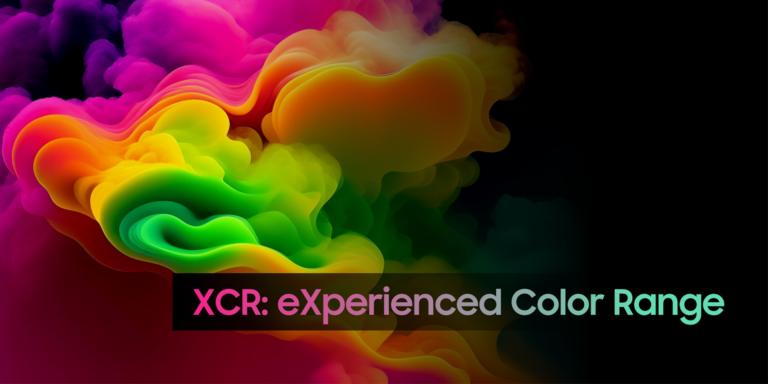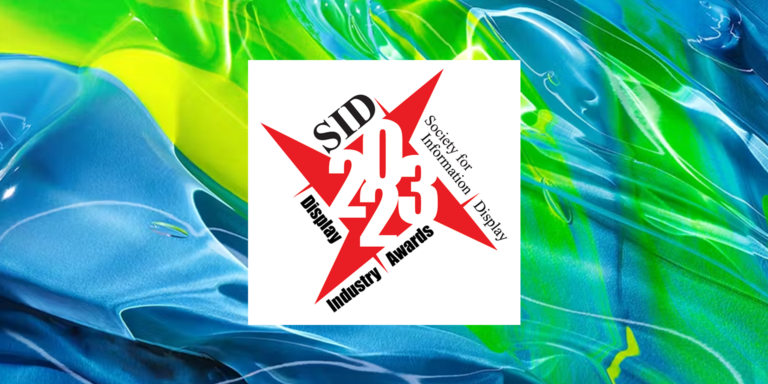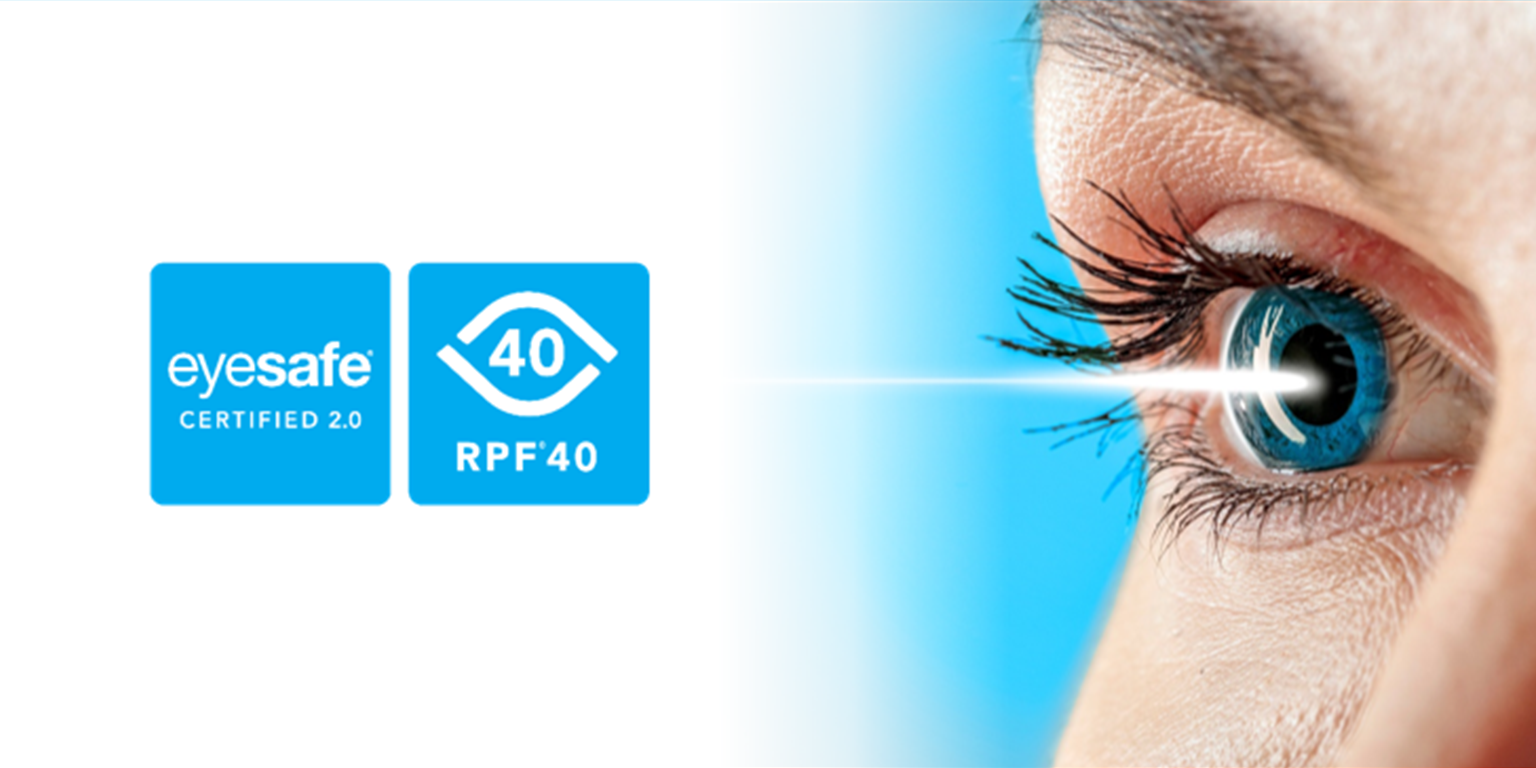
Why Low Blue Light Displays Matter: Inside QD-OLED’s Eyesafe Certification
Discover the importance of low blue light displays and how the Samsung QD-OLED and Eyesafe partnership brings the best of health and performance to users.
Written by Elishaa Batdorf, Marketing Director at Eyesafe
The last decade has seen a rapid expansion of digital devices in our daily life, far beyond instruments of work and entertainment. Digital devices are now used in every aspect of our lives for gaming, sports, health, fitness, education, and more. While technology has its benefits, medical professionals are increasingly concerned about the potential negative health effects of screen time and blue light exposure.
That’s why Samsung is collaborating with Eyesafe, a supplier specializing in mitigating blue light, to signify to consumers that its QD-OLED display meets the rigid Eyesafe® Certified requirements for blue light and color performance.
This article explains the importance of reducing blue light, the Eyesafe Certification, and what this means for Samsung QD-OLED products.
What are the risks of blue light exposure?
All digital devices emit blue light. Blue light in nature is part of the solar spectrum, often called high-energy visible light (HEV), as it radiates within the high energy portion of the light spectrum, closer to the UVA.

Blue light contributes to our alertness, memory, and cognitive functions, through its connection to our circadian clock. In the morning, there is more blue light to keep us awake compared to the rest of the day, in which the reds increase, triggering melatonin secretion so we can sleep at night.1-3 There is evidence that a harmful portion of blue light may create irreversible damage to the retina from accumulated exposure over many years.4-6 And while natural light has a changing spectrum during the day, digital devices emit the same amount of blue light at all times, thus impacting our eyes, sleep, and overall health.
Unlike other forms of light, the eyes cannot effectively filter blue light, so more can pass through the eye to the retina. Eye care professionals are concerned because of the close proximity of the screens to our eyes, the duration of device use, and the potential cumulative impact of using devices every day.
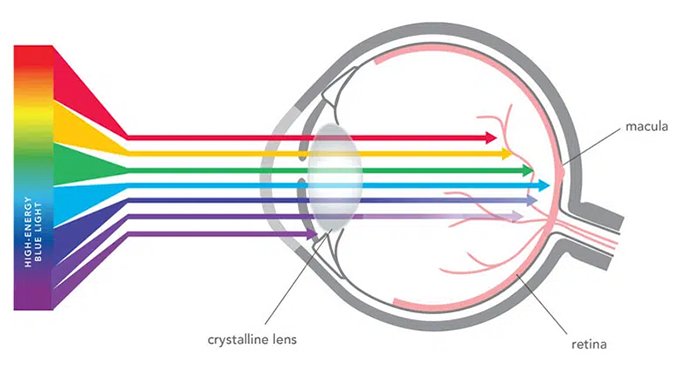
According to the Vision Council, as many as 65% of people experience eye discomfort and vision problems when using digital devices for extended periods. Symptoms may include eye strain, headaches, blurred vision, and dry eyes.7 Furthermore, blue light has been shown to suppress melatonin and may disrupt sleep. Too much blue light exposure from viewing screens at night may result in sleep deficiency, which can adversely impact performance, health, and safety.8
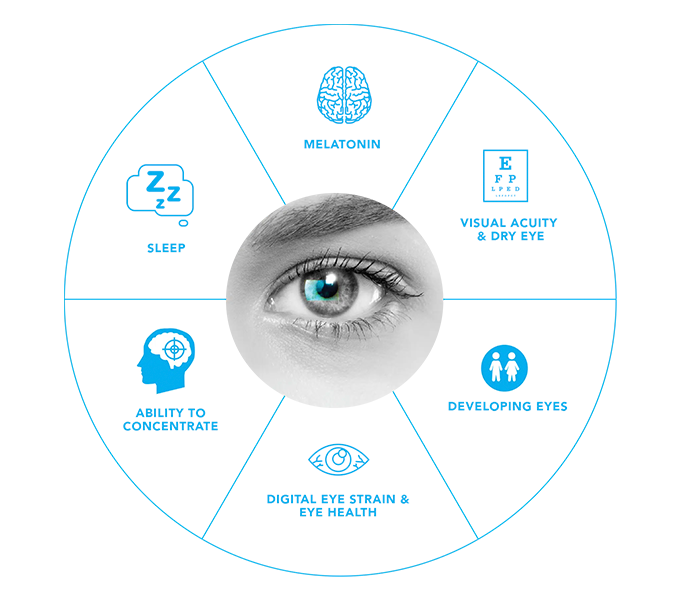
To address these concerns, consumers are turning to low blue light displays to mitigate the potential negative effects of screen time. Low blue light displays are designed to emit less blue light than traditional displays, reducing the potential for visual discomfort and other health issues. As a result, low blue light displays have become increasingly popular among consumers, especially those who spend a significant amount of time in front of screens.
What is Eyesafe, and why should consumers trust this certification?
Eyesafe is a global leader in blue light management, including technology, certification, and accessory solutions. With an expansive intellectual property portfolio, Eyesafe employs a global team of experienced engineers, eye doctors, and scientists. The company collaborates with the medical and scientific communities to develop health-based standards for the consumer electronics industry, which are reflected in the Eyesafe Certification program.
Eyesafe, in partnership with TÜV Rheinland, announced the launch of Eyesafe® Certification 2.0 in May 2022. This program aims to address the growing body of research suggesting potential risks of blue light exposure. The requirements for achieving Eyesafe Certification include Blue Light Toxicity Factor (BLTF) and color performance. To learn more, you can download Eyesafe’s whitepaper: Defining Blue Light Requirements for Digital Displays.
Eyesafe Display Requirements 2.0
To achieve the latest certification, displays must meet the following specifications:
Eyesafe® Display Requirements 2.0
| High-Energy Blue Light | Weighted blue light toxicity emissions based on ICNIRP Guidelines | Radiance Protection Factor (RPF) Pass/Fail of certification will be at RPF 35. Measurement of blue light toxicity, based on research and optical testing. The RPF scale is tested and verified by TÜV Rheinland. |
| Color Performance | Color Gamut Coverage % | For sRGB color mode: ≥95% of standard sRGB color space in CIE 1931; 1976 For Adobe RGB color mode: ≥90% of Adobe RGB color space in CIE 1931; 1976 For DCI-P3 color mode: ≥90% of DCI-P3 color space in CIE 1931; 1976 For NTSC color mode: ≥72% of NTSC color space in CIE 1931; 1976 |
| Color Temperature | 5500-7000K****Only applicable to AIO, NB, Monitors |
The Eyesafe® Display Requirements for blue light management and color performance align with the American National Standards Institute (ANSI) and the International Commission on Non-Ionizing Radiation Protection (ICNIRP)’s standards and guidelines.
Eyesafe quantifies the impact blue light emission has on human eyes by using the above standards’ weighting function B(λ) for retinal Blue Light Hazard. The certification also considers other all-optical hazards.
Eyesafe Display Requirements focus on the HEV light that is emitted by digital devices and rely on two updated standards from the American National Standards Institute (ANSI) to guide our product development: Z80.3-2018 and Z87.1-2020, which identify the blue light hazard wavelengths range and its hazard maximum at 435 nm to 440 nm, and include data for computing blue light transmittance.
What is Radiance Protection Factor (RPF)?
As part of Eyesafe Certification 2.0, Eyesafe and TÜV Rheinland introduced Radiance Protection Factor (RPF®). This simple metric provides a rating system to help the end-user identify and compare devices and their respective blue light emissions at a specific brightness level (200 nits). RPF is calculated using a scaling factor based on current LCD and OLED technologies. The RPF is a number (1-100) that reflects the blue light toxicity of the display.
Similar to how Sun Protection Factor (SPF) measures how well a sunscreen will protect against UVB rays, the Radiance Protection Factor (RPF) measures how much blue light protection a device has. The higher the number, the greater reduction of blue light.
To achieve Eyesafe Certification 2.0, the display must have an RPF of 35 or higher.
What are the benefits of Samsung’s Eyesafe-certified QD-OLED products?
Samsung’s QD-OLED combines the advantages of OLED and quantum dots. QD-OLED displays are known for their exceptional color accuracy, brightness, and energy efficiency. By achieving Eyesafe Certification, Samsung can now give users the added benefit of blue light protection alongside the excellent image quality and visual experience of the QD-OLED display.
“We congratulate Samsung Display on meeting Eyesafe Certified 2.0, the internationally recognized gold standard for measuring blue light and color performance in a display,” said Justin Barrett, CEO of Eyesafe. “Achieving this certification demonstrates Samsung Display’s ardent commitment to human health and user experience. We look forward to seeing more of our displays meet the Eyesafe standard in the future.”
As blue light awareness grows, consumers are becoming increasingly savvy and concerned about protecting their eyes. QD-OLED Eyesafe Certified displays help customers who are prioritizing eye comfort to easily identify products that mitigate the risks associated with blue light.
It’s important to note that while Eyesafe aims to reduce blue light exposure, users should still practice healthy screen habits, such as taking breaks, using proper lighting conditions, and maintaining an appropriate viewing distance, to minimize eye strain and promote overall eye health.
About the author:
Elishaa Batdorf is the Marketing Director at Eyesafe, a world leader in blue light management. Elishaa has been with Eyesafe since December 2020. She has a BA from the University of St. Thomas and an MBA from the University of Minnesota – Carlson School of Management.
This website does not provide medical advice, and its products are not intended to diagnose, treat, cure or prevent any disease or medical condition. Please consult your physician or other qualified healthcare provider with any questions you may have about your health. See full disclaimer.
References:
- Systematic review of light exposure impact on human circadian rhythm. L. Tahkamo, T. Partonen and A.K. Pesonen, Chronobiology International, 2019. 36(1510170). https://doi.org/10.1080/07420528.2018.1527773
- Circadian photoreception: ageing and the eye’s important role in systemic health. P.L. Turner and M.A. Mainster, The British journal of ophthalmology, 2008. 92(11): p. 1439-1444. https://doi.org/10.1136/bjo.2008.141747
- What’s in a Color? The Unique Human Health Effect of Blue Light. D.C. Holzman, Environmental Health Perspectives, 2010. 118(1): p.A22-A27. https://www.ncbi.nlm.nih.gov/pmc/articles/PMC2831986/pdf/ehp-118-a22.pdf
- Light-sensitive brain pathways and aging. V. Daneault, M. Dumont, É. Massé, G. Vandewalle, et al., Journal of Physiological Anthropology, 2016. 35(1): p. 9. https://doi.org/10.1186/s40101-016-0091-9
- Effects of blue light on the circadian system and eye physiology. G. Tosini, I. Ferguson and K. Tsubota, Molecular Vision 2016. 22(2157-2518): p. 61-72. http://www.molvis.org/molvis/v22/61
- Brain Responses to Violet, Blue, and Green Monochromatic Light Exposures in Humans: Prominent Role of Blue Light and the Brainstem.G. Vandewalle, C. Schmidt, G. Albouy, V. Sterpenich, et al., PLOS ONE, 2007. 2(11): p. e1247. https://doi.org/10.1371/journal.pone.0001247
- Digital Eye Strain, The Vision Council, https://visionoptions.thevisioncouncil.org/digital-eye-strain
- Chang AM, et al. Evening use of light-emitting eReaders negatively affects sleep, circadian timing, and next-morning alertness. Proceedings of the National Academy of Sciences of the United States (PNAS). January 2015. 112(4): 1232-1237. [Accessed December 3, 2019]
